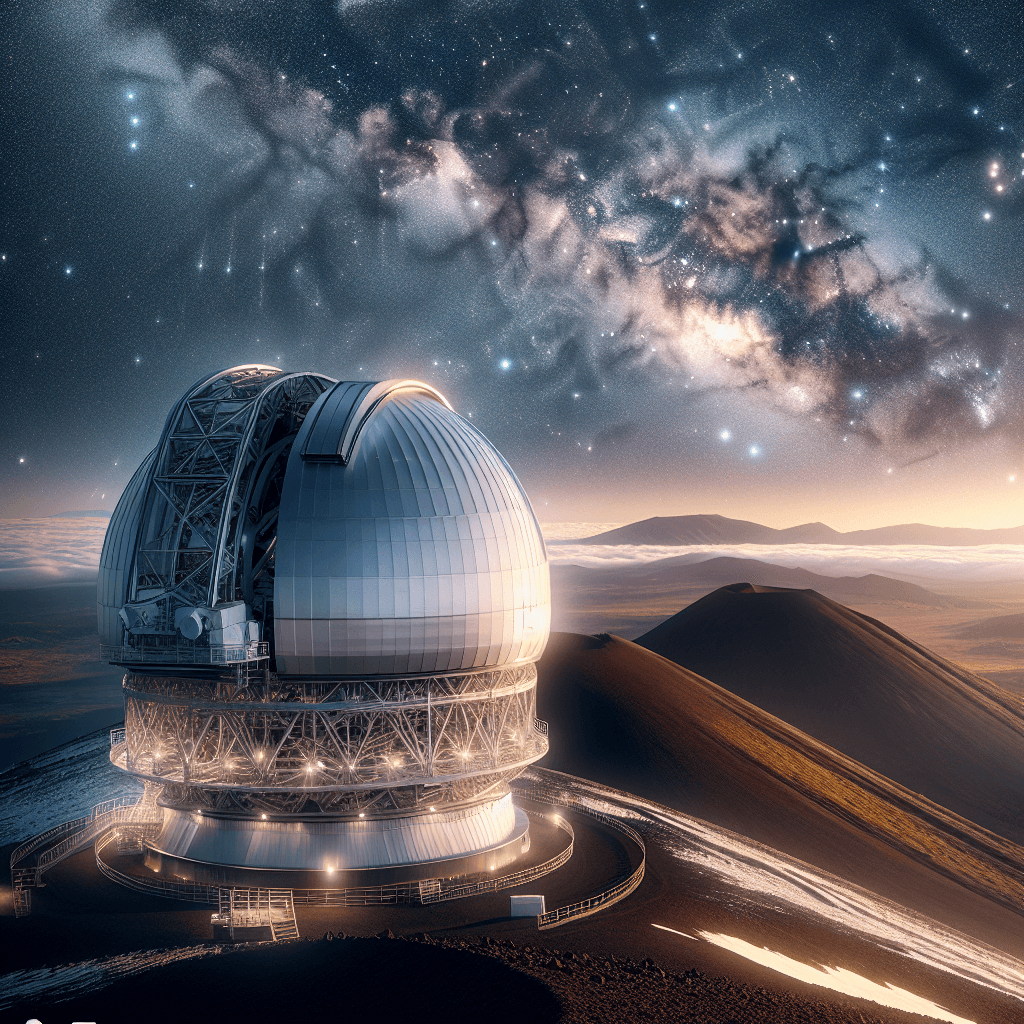Why are the world's most powerful telescopes often built on top of volcanoes
It’s a high-stakes gamble placing our most delicate instruments on geological time bombs, but for an unparalleled view of the cosmos, it's the only bet worth making.


Too Long; Didn't Read
TLDR: Volcanoes provide the ideal conditions for viewing space. Their high altitude places telescopes above distorting atmosphere, clouds, and water vapor, while their remote locations mean no light pollution. This results in clearer, more stable images of the universe.
Title: Reaching for the Stars: Why Are the World's Most Powerful Telescopes Often Built on Top of Volcanoes?
Introduction
Have you ever wondered why the world's most sophisticated observatories—our gateways to understanding the cosmos—are perched atop remote, often dormant, volcanoes? It seems counterintuitive to build billion-dollar instruments on such dramatic geological features. Yet, from Mauna Kea in Hawaii to La Palma in the Canary Islands, these volcanic peaks are considered the most prized real estate on Earth for astronomy. The reason isn't the dramatic view of the landscape below, but the unparalleled view of the universe above. This blog post will explore the unique combination of atmospheric and geographic factors that makes volcanic summits the ideal platforms for humanity's quest to unravel the secrets of the stars.
The Atmosphere: An Astronomer's Greatest Hurdle
To understand why volcanoes are prime observatory locations, we must first understand the main obstacle for any ground-based telescope: Earth's atmosphere. While essential for life, our planet's blanket of air is a constant source of frustration for astronomers. The familiar "twinkling" of stars is not a property of the stars themselves but a result of starlight being bent and distorted as it passes through turbulent pockets of air. This atmospheric turbulence, known to astronomers as "seeing," blurs images and limits the detail a telescope can resolve. The thicker and more unstable the layer of atmosphere, the worse the view. Therefore, the primary goal for siting a world-class telescope is to get as high above this turbulent, hazy blanket as possible.
The Volcanic High Ground Advantage
Dormant shield volcanoes, in particular, offer a perfect cocktail of conditions that mitigate atmospheric problems. Their unique geology and location create an environment that is high, dry, dark, and stable—the four pillars of a perfect observatory site.
Here’s a breakdown of the key advantages:
- Extreme Altitude: Volcanoes are some of the tallest mountains on the planet. The summit of Mauna Kea, for instance, sits at nearly 14,000 feet (4,207 meters). At this elevation, telescopes are above 40% of Earth's atmosphere. Less air means less turbulence, less scattering of light, and a significantly sharper view of celestial objects.
- Exceptionally Dry Air: The atmosphere at these high altitudes contains very little water vapor. This is crucial for infrared astronomy, which observes the heat radiation emitted by cosmic objects like newborn stars and distant galaxies. Water vapor in the lower atmosphere absorbs infrared radiation, effectively making the universe invisible at these wavelengths. The cold, thin air on volcanic peaks is incredibly dry, opening a clear window to this part of the electromagnetic spectrum.
- Smooth, Stable Airflow: Many of the best volcanic sites are shield volcanoes, which have long, gentle slopes. As winds travel across the vast expanse of the ocean, they encounter these smooth slopes and flow over them in a stable, layered pattern known as laminar flow. This is the opposite of the turbulent, choppy air found over jagged mountain ranges, resulting in much less distortion and a steadier image.
- Darkness and Isolation: These volcanoes are typically located in the middle of oceans, far from the light pollution of major cities. The surrounding water also helps to stabilize the climate and reduce the formation of clouds below the summit. This combination of geographic isolation and altitude guarantees some of the darkest, clearest night skies found anywhere on Earth.
Prime Examples: Mauna Kea and La Palma
The proof is in the placement. The summit of Mauna Kea in Hawaii hosts over a dozen world-class observatories, including the Keck Observatory and the Subaru Telescope. Its position in the middle of the Pacific Ocean provides an incredibly stable and dry atmosphere. Similarly, the Roque de los Muchachos Observatory on the island of La Palma sits on the rim of a massive volcanic caldera. It is home to the Gran Telescopio Canarias, one of the largest single-aperture optical telescopes in the world, taking advantage of the same stable, oceanic airflow and pristine skies. While these sites are scientifically ideal, it is also important to acknowledge their profound cultural and spiritual significance to indigenous peoples, leading to ongoing conversations about the shared use of these sacred mountains.
Conclusion
The decision to build our most powerful telescopes on volcanoes is a strategic choice driven by simple physics. These locations lift our observatories above the thick, turbulent soup of the lower atmosphere, providing a clearer, drier, and more stable vantage point from which to view the cosmos. By placing our eyes to the universe on these high, isolated peaks, astronomers gain precious clarity, allowing them to capture breathtaking images and data that would be impossible to obtain from sea level. So, the next time you see a photo of a gleaming white observatory against a volcanic backdrop, you’ll know it’s not just for the stunning scenery—it’s for the fundamental need to get as close to the stars as possible, without ever leaving Earth.


